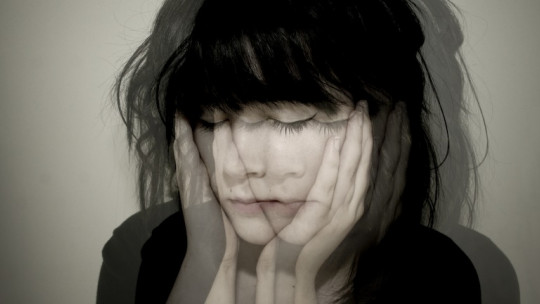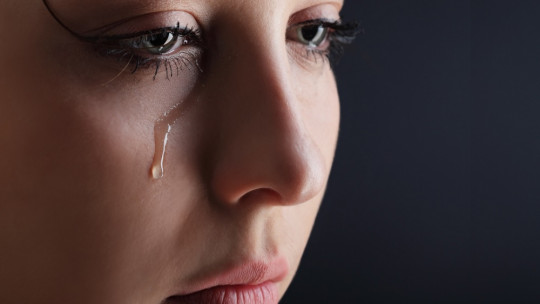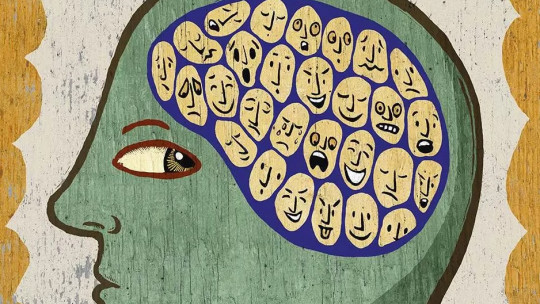Symptoms of psychosis, such as those found in schizophrenia draw particular attention within the wide range of mental disorders: hallucinations or delusions fit perfectly with the idea of psychopathology that many people have.
The terms “psychosis” and “schizophrenia” are often used interchangeably. Nevertheless, There are clear conceptual differences between them ; In this article we will see what they consist of and clarify what their relationship is.
What is psychosis?
It is known as “psychosis” a series of symptoms related to the loss of contact with reality. It is frequently associated with alterations in thought and behavior, including verbal behavior, which cause alterations in many areas of functioning.
The term began to be used in 1841 by the German psychiatrist Karl Friedrich Canstatt. It comes from Latin and can be translated as “alteration of the soul” or “of the mind.” Initially included schizophrenia and bipolar disorder and It was used in opposition to the concept “neurosis” which is still common today.
The experiences included in the concept of psychosis are multiple and varied. Hallucinations, delusions and catatonia (a state of psychogenic immobility) are three of the most characteristic psychotic manifestations, but they do not always occur in pathological contexts; For example, hypnagogic hallucinations, which sometimes appear just before we fall asleep, are formally equivalent to psychosis.
Psychotic symptoms can have very different causes. As in schizophrenia, bipolar disorder or dementia, they are usually a consequence of the combination of psychosocial stress with brain alterations, or with the excessive consumption of certain substances and drugs, including alcohol and amphetamines.
On the other hand, psychotic disorders include schizophrenia, schizotypal personality disorder, schizoaffective disorder, delusional disorder, schizophreniform disorder, brief psychotic disorder, catatonia, and psychoses induced by illness and substance use.
Definition of schizophrenia
schizophrenia It is an alteration that is included in the group of psychotic disorders being the most representative and well-known among these. Its cardinal symptoms are psychotic, such as disorganization of thought or the presence of delusions and hallucinations.
It is a disorder that frequently generates social maladjustment and promotes the appearance of depression, anxiety and substance abuse. In many cases it occurs chronically and is managed with very powerful antipsychotic drugs, frequently requiring hospitalization.
The symptoms of schizophrenia are divided into positive and negative. Positive symptoms are related to alterations in mental functions, such as hallucinations, while negative symptoms are emotional, motivational or social deficits, among others.
The DSM-IV manual divides schizophrenia into five types: paranoid, disorganized, catatonic, undifferentiated and residual. This classification is made based on the predominant symptoms and the course of the disorder. The DSM-5 eliminated the distinction between subtypes of schizophrenia.
To diagnose schizophrenia, delusions, hallucinations, disorganized speech, catatonia or negative symptoms must have occurred continuously for at least 6 months. Furthermore, these symptoms must cause personal, social or work difficulties and They cannot be directly due to an illness or the consumption of drugs or drugs.
Differences between psychosis and schizophrenia
In summary we can say that “psychosis” and “schizophrenia” are two closely related concepts, but schizophrenia is a mental disorder with specific diagnostic criteria while psychosis is a group of symptoms that can occur due to schizophrenia or due to other reasons.
Below you will find 5 keys that will help you differentiate psychosis and schizophrenia.
1. One includes the other
Schizophrenia is a disorder that causes multiple symptoms, among which psychotic symptoms stand out, although they are not the only ones: for example, anxiety and depression are also very common in the context of schizophrenia.
For its part, psychosis encompasses schizophrenia if we understand the term “psychosis” as equivalent to “psychotic disorder.” This usually happens when we refer to this group of disorders as “psychoses.”
2. Psychosis does not always imply schizophrenia
Psychotic-type experiences are relatively common in certain settings, such as the use of hallucinogenic substances or brain damage due to dementia. Thus, it is not necessary to meet the criteria for schizophrenia to be able to talk about the existence of a psychosis, especially if it is a brief episode.
3. The presence of psychopathology
When they occur as a result of schizophrenia or other more or less similar disorders, such as psychotic depression or schizoaffective disorder, psychotic symptoms are considered a key indicator of psychopathology. In affective disorders or dementia, psychotic symptoms are associated with an increase in severity or progression of the disorder.
However, psychotic symptoms do not always imply greater severity : People diagnosed with paranoid schizophrenia, which is characterized by hallucinations and delusions, have a better prognosis than those in whom negative symptoms predominate.
4. The duration of symptoms
The duration of psychotic manifestations varies greatly, from episodes of a few seconds or minutes induced by drug use to schizophrenia, which requires that symptoms persist for at least 6 months. At an intermediate point is the brief psychotic disorder, which lasts a maximum of one month.
5. Psychosis has multiple causes
Although the brain alterations typical of schizophrenia can cause psychotic experiences, these also They may be due to other psychological and biological causes. These include intense stress and fatigue, depression, brain injuries and the consumption of some substances.









